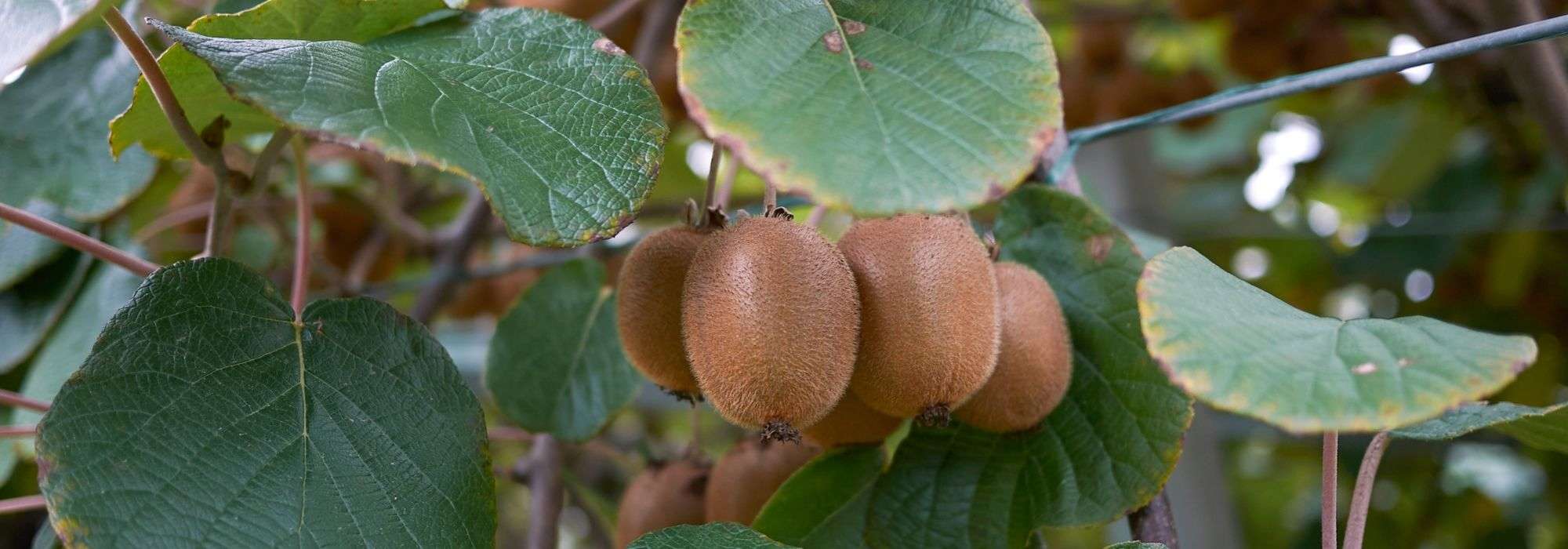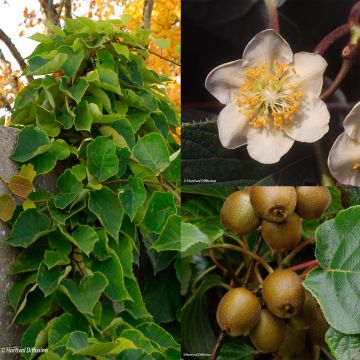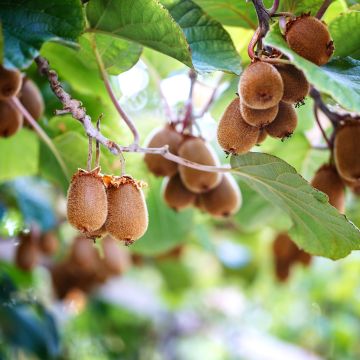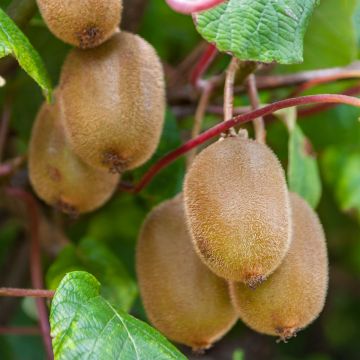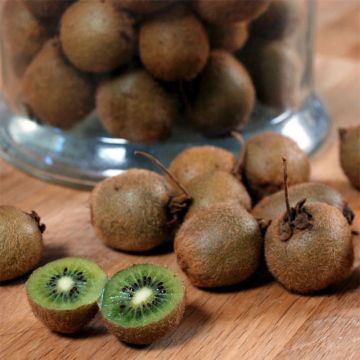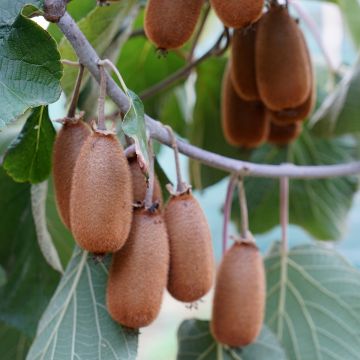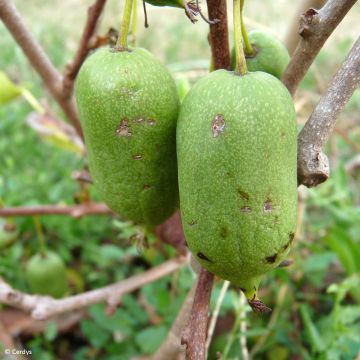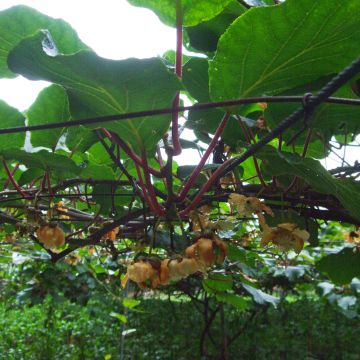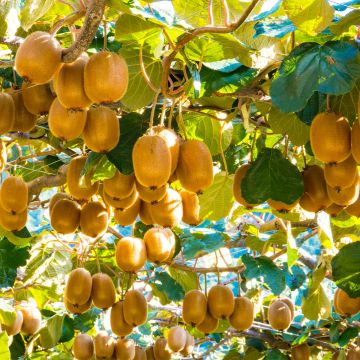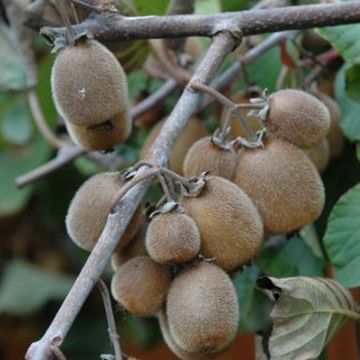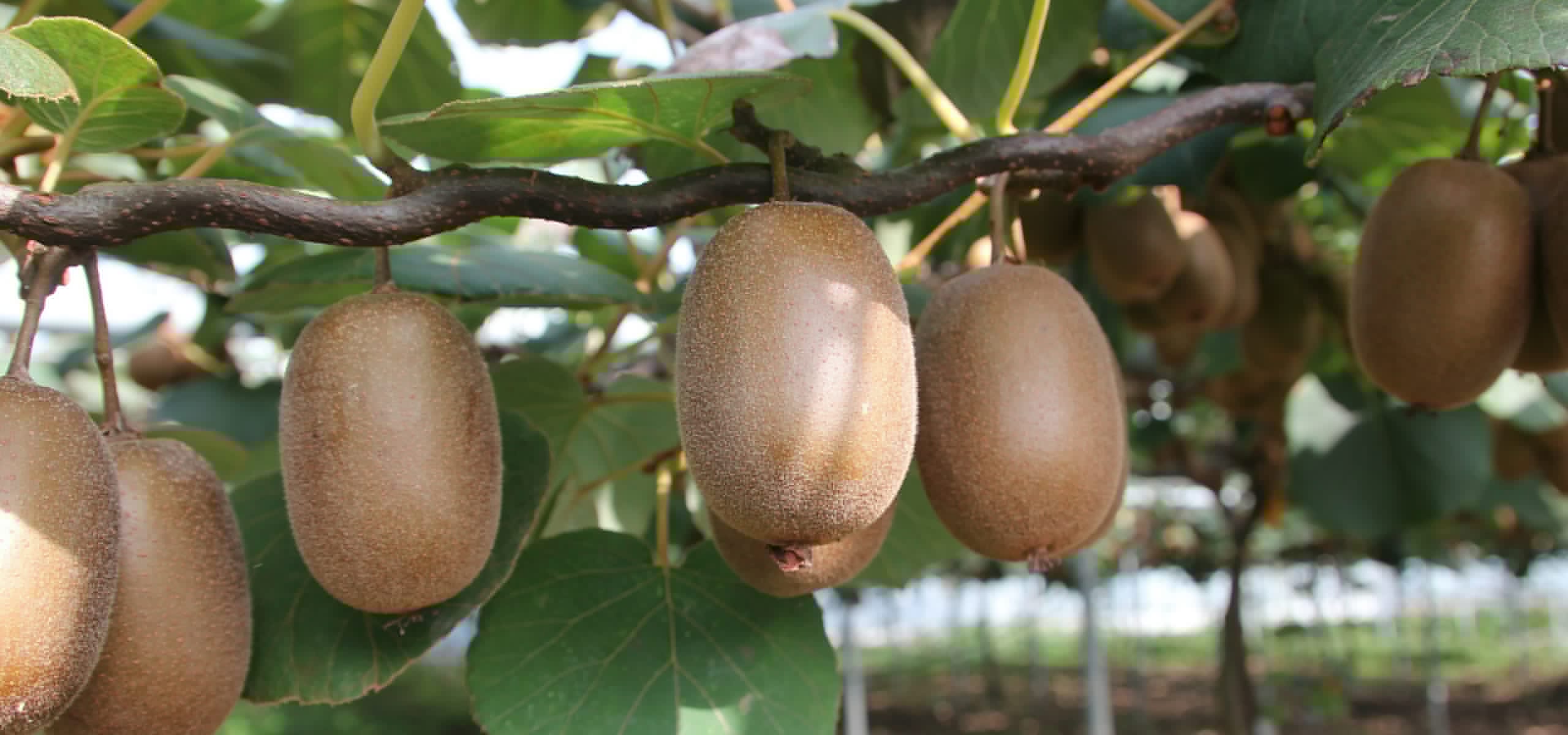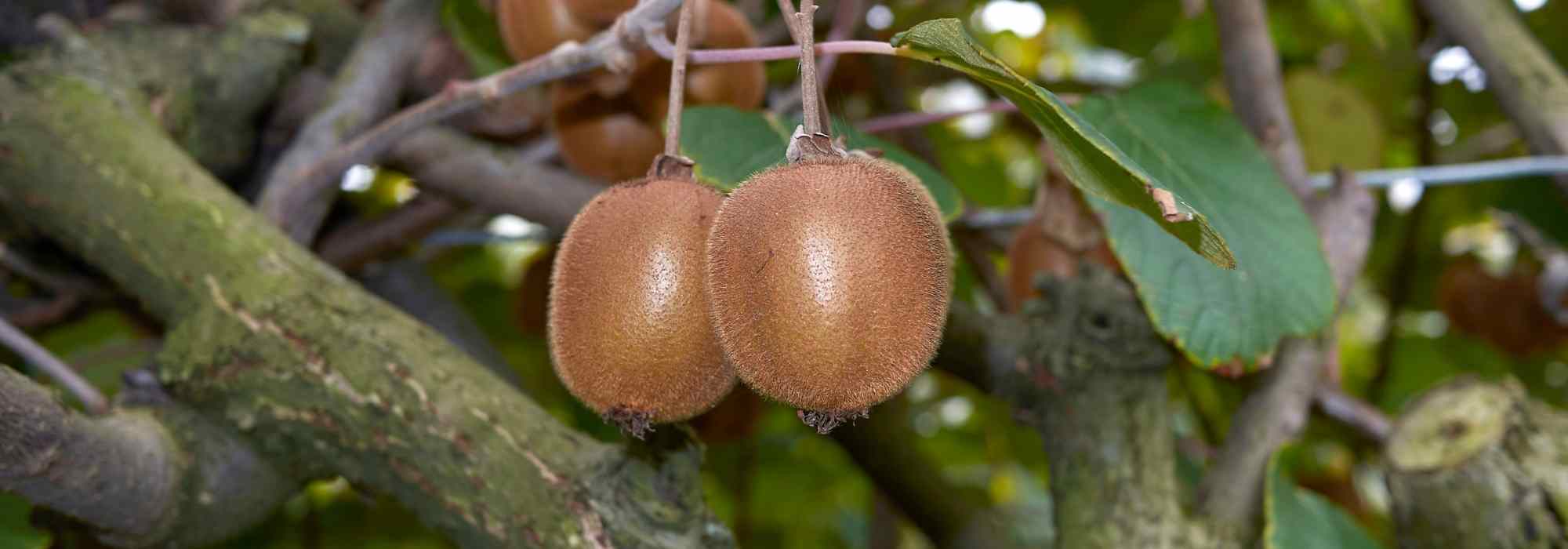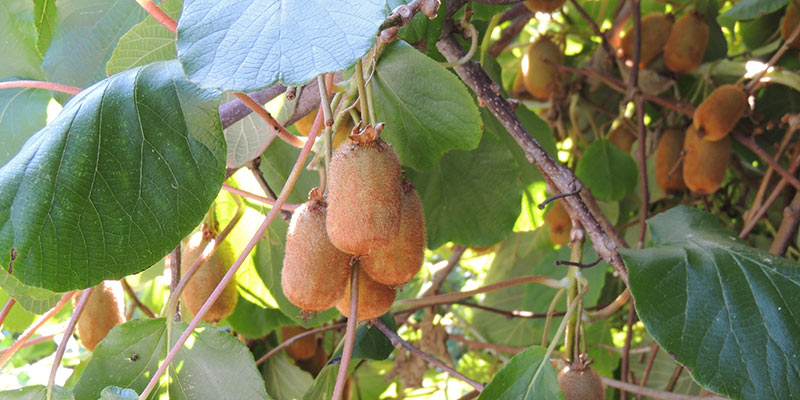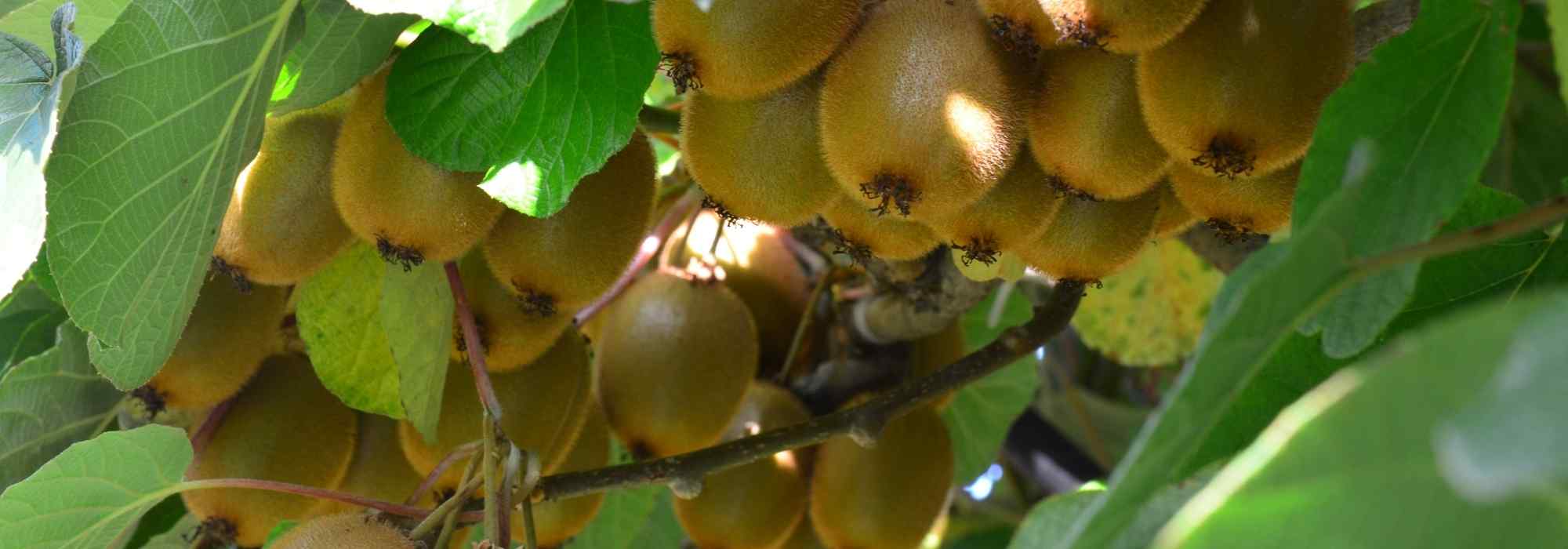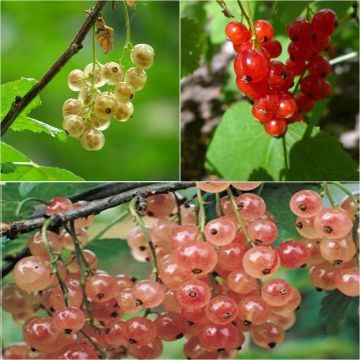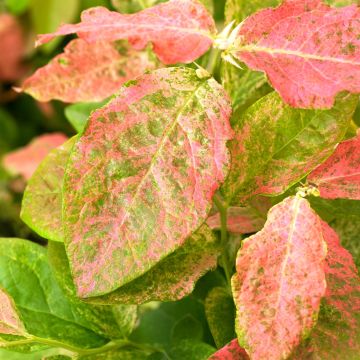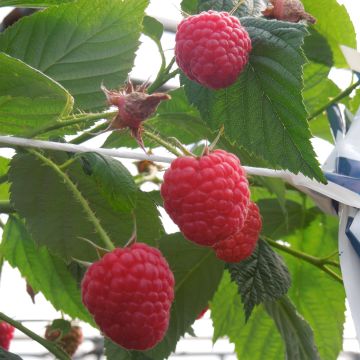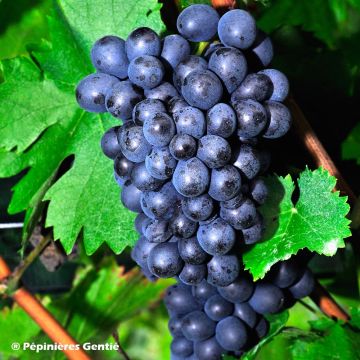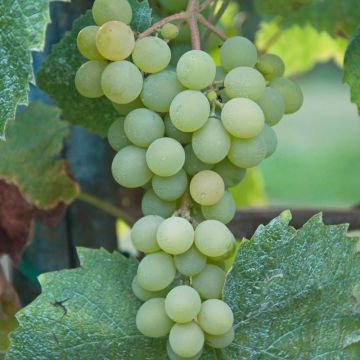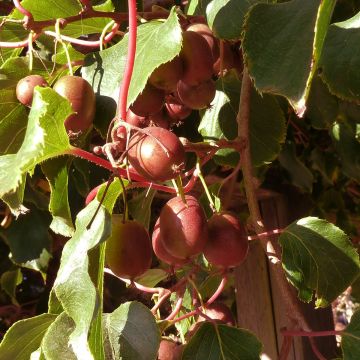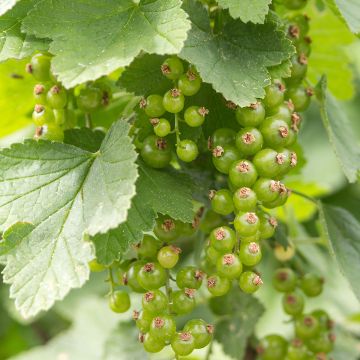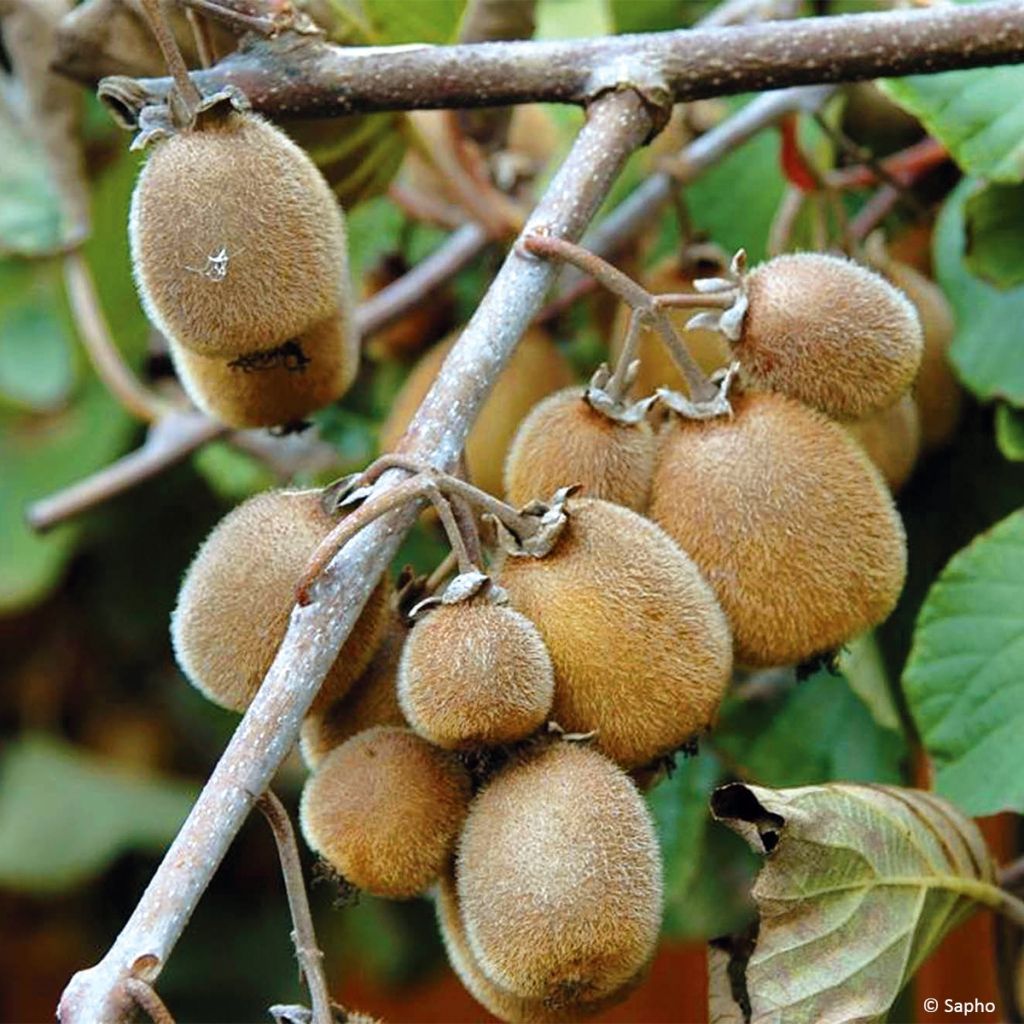

Kiwi Solissimo Bio - Actinidia deliciosa
Organic Kiwi Plant Solissimo (self-fertile) - Actinidia chinensis
Actinidia chinensis Solissimo® Bio
Chinese Gooseberry, Kiwi Fruit, Kiwi
Special offer!
Receive a €20 voucher for any order over €90 (excluding delivery costs, credit notes, and plastic-free options)!
1- Add your favorite plants to your cart.
2- Once you have reached €90, confirm your order (you can even choose the delivery date!).
3- As soon as your order is shipped, you will receive an email containing your voucher code, valid for 3 months (90 days).
Your voucher is unique and can only be used once, for any order with a minimum value of €20, excluding delivery costs.
Can be combined with other current offers, non-divisible and non-refundable.
Home or relay delivery (depending on size and destination)
Schedule delivery date,
and select date in basket
This plant carries a 6 months recovery warranty
More information
We guarantee the quality of our plants for a full growing cycle, and will replace at our expense any plant that fails to recover under normal climatic and planting conditions.

Description
The Organic Solissimo Self-Fertile Kiwi 'Renact' is a self-fertile variety of Actinidia chinensis. It is useful for its ability to produce large fruits without the need for a male kiwi nearby, saving space in the garden. It is a vigorous and decorative climber that produces white flowers in May-June, which turn orange when fully open and have a pleasant fragrance. The hairy brown kiwis are usually harvested in November. They have a sweet, juicy flesh, rich in vitamin C. The foliage is also interesting, lush, ornamental, dark green on top, and lighter underneath. This abundant plant should be trained on a sturdy support after careful planting in fertile, preferably non-alkaline, soil, in filtered sunlight or partial shade.
The Solissimo Actinidia chinensis belongs to the Actinidiaceae family. It comes from Actinidia chinensis, native to central and western regions of China. This vigorous liana can grow up to 3 metres (10 feet) per year under favourable conditions, reaching a height of 6 metres (20 feet) and a spread of 4 metres (13 feet). Its long sinuous stems can become as thick as a finger, forming an interlacing structure that can break a fragile support. They bear large oval and entire leaves, dark matte green on top, lighter underneath, covered with tiny red hairs, just like the stems. The leaves are wide and ovate on sterile shoots, more rounded and heart-shaped on fertile shoots. From the third or fourth year of cultivation, flowers appear on the previous year's branches, grouped in clusters. Flowering occurs in May-June, with fragrant flowers with wide cream-white petals that turn orange, measuring 3 to 4cm (1 to 2in) in diameter, surrounding a heart of fertile stamens. The fruits are large fleshy oval to elliptical berries, weighing about 60 grams, with a light brown thin skin covered in fine silky hairs. The flesh is green, with numerous oily seeds. The harvest extends from late October to late November. It is abundant and has a good taste. The yield is around 60kg per mature plant, after 10 or 12 years of cultivation. This kiwi is a very good source of vitamin C, vitamin E, and minerals such as potassium, magnesium, and calcium.
The Solissimo kiwi is a voracious plant that needs space to establish itself. It is necessary to provide a strong and large enough support to train the plant on a wall with a sturdy wire, a pergola, or a tree trunk. This plant is hardy, but it should be sheltered from cold winds. Harvest the fruits while still green, they will ripen three weeks later. They can be stored well in a cool place at 5°C, in a cellar, for over a month. The peeled fruit can be enjoyed fresh or mixed in an autumn fruit salad: pears, apples, Italia or Red Globe grapes, pineapple, for example, flavoured with dark rum and vanilla. They can also be used to make delicious jams and beautiful decorations on tarts.
This new variety resulting from a mutation is a real breakthrough. Before the emergence of the 'solissimo' kiwi, it was necessary to plant at least 2 plants (1 male + 1 female) to harvest kiwis. There were indeed self-fertile varieties, but they produced very small fruits.
Organic Kiwi Plant Solissimo (self-fertile) - Actinidia chinensis in pictures
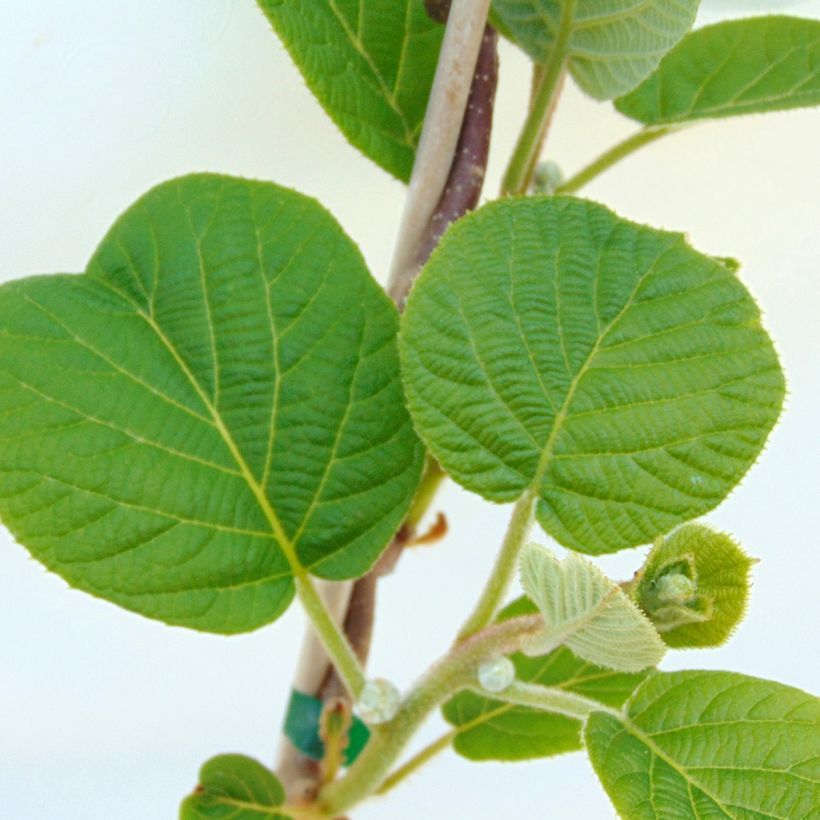

Plant habit
Fruit
Flowering
Foliage
Botanical data
Actinidia
chinensis
Solissimo® Bio
Actinidiaceae
Chinese Gooseberry, Kiwi Fruit, Kiwi
Cultivar or hybrid
Other Kiwi bush
View all →Planting and care
Plant the self-fertile Solissimo organic kiwi ideally in autumn, but it can be transplanted any time of the year outside of freezing periods, in deep, well-drained, loose, fertile soil, with not too much limestone (preferably neutral to acidic), remaining moist. Dig a hole and pour the contents of a bag of enriched horticultural compost into it, burying the root ball not too deeply. The collar of the plant should be level with the ground. Firmly pack the soil and water generously. Planting distance between two plants: 2 metres (7 feet). Mulch the plants during the first three winters. This kiwi appreciates sunny positions, but not scorching ones. Not very susceptible to insects and diseases, the Solissimo Actinidia chinensis can still be affected by red spider mites. This mite develops in a warm and dry environment. This climber will greatly appreciate having the foliage and soil sprayed with water in the evening, lightly but regularly, to control mites while refreshing the plant in case of high heat.
Maintenance treatment: In late winter, lightly bury organic fertiliser or well-rotted manure at the base of the plant. Train the stems as they grow by tying them in without tightening too much. They will then wrap around the support.
Planting period
Intended location
Care
Planting & care advice
This item has not been reviewed yet - be the first to leave a review about it.
Similar products
Haven't found what you were looking for?
Hardiness is the lowest winter temperature a plant can endure without suffering serious damage or even dying. However, hardiness is affected by location (a sheltered area, such as a patio), protection (winter cover) and soil type (hardiness is improved by well-drained soil).

Photo Sharing Terms & Conditions
In order to encourage gardeners to interact and share their experiences, Promesse de fleurs offers various media enabling content to be uploaded onto its Site - in particular via the ‘Photo sharing’ module.
The User agrees to refrain from:
- Posting any content that is illegal, prejudicial, insulting, racist, inciteful to hatred, revisionist, contrary to public decency, that infringes on privacy or on the privacy rights of third parties, in particular the publicity rights of persons and goods, intellectual property rights, or the right to privacy.
- Submitting content on behalf of a third party;
- Impersonate the identity of a third party and/or publish any personal information about a third party;
In general, the User undertakes to refrain from any unethical behaviour.
All Content (in particular text, comments, files, images, photos, videos, creative works, etc.), which may be subject to property or intellectual property rights, image or other private rights, shall remain the property of the User, subject to the limited rights granted by the terms of the licence granted by Promesse de fleurs as stated below. Users are at liberty to publish or not to publish such Content on the Site, notably via the ‘Photo Sharing’ facility, and accept that this Content shall be made public and freely accessible, notably on the Internet.
Users further acknowledge, undertake to have ,and guarantee that they hold all necessary rights and permissions to publish such material on the Site, in particular with regard to the legislation in force pertaining to any privacy, property, intellectual property, image, or contractual rights, or rights of any other nature. By publishing such Content on the Site, Users acknowledge accepting full liability as publishers of the Content within the meaning of the law, and grant Promesse de fleurs, free of charge, an inclusive, worldwide licence for the said Content for the entire duration of its publication, including all reproduction, representation, up/downloading, displaying, performing, transmission, and storage rights.
Users also grant permission for their name to be linked to the Content and accept that this link may not always be made available.
By engaging in posting material, Users consent to their Content becoming automatically accessible on the Internet, in particular on other sites and/or blogs and/or web pages of the Promesse de fleurs site, including in particular social pages and the Promesse de fleurs catalogue.
Users may secure the removal of entrusted content free of charge by issuing a simple request via our contact form.
The flowering period indicated on our website applies to countries and regions located in USDA zone 8 (France, the United Kingdom, Ireland, the Netherlands, etc.)
It will vary according to where you live:
- In zones 9 to 10 (Italy, Spain, Greece, etc.), flowering will occur about 2 to 4 weeks earlier.
- In zones 6 to 7 (Germany, Poland, Slovenia, and lower mountainous regions), flowering will be delayed by 2 to 3 weeks.
- In zone 5 (Central Europe, Scandinavia), blooming will be delayed by 3 to 5 weeks.
In temperate climates, pruning of spring-flowering shrubs (forsythia, spireas, etc.) should be done just after flowering.
Pruning of summer-flowering shrubs (Indian Lilac, Perovskia, etc.) can be done in winter or spring.
In cold regions as well as with frost-sensitive plants, avoid pruning too early when severe frosts may still occur.
The planting period indicated on our website applies to countries and regions located in USDA zone 8 (France, United Kingdom, Ireland, Netherlands).
It will vary according to where you live:
- In Mediterranean zones (Marseille, Madrid, Milan, etc.), autumn and winter are the best planting periods.
- In continental zones (Strasbourg, Munich, Vienna, etc.), delay planting by 2 to 3 weeks in spring and bring it forward by 2 to 4 weeks in autumn.
- In mountainous regions (the Alps, Pyrenees, Carpathians, etc.), it is best to plant in late spring (May-June) or late summer (August-September).
The harvesting period indicated on our website applies to countries and regions in USDA zone 8 (France, England, Ireland, the Netherlands).
In colder areas (Scandinavia, Poland, Austria...) fruit and vegetable harvests are likely to be delayed by 3-4 weeks.
In warmer areas (Italy, Spain, Greece, etc.), harvesting will probably take place earlier, depending on weather conditions.
The sowing periods indicated on our website apply to countries and regions within USDA Zone 8 (France, UK, Ireland, Netherlands).
In colder areas (Scandinavia, Poland, Austria...), delay any outdoor sowing by 3-4 weeks, or sow under glass.
In warmer climes (Italy, Spain, Greece, etc.), bring outdoor sowing forward by a few weeks.






























